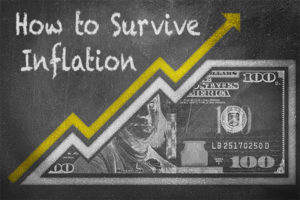Student Loan Debt Increases $42B in Third Quarter, Closing in on $1T
The federal lending program once intended to provide all Americans the luxury of going to college faces a serious financial plight.
According to the Federal Reserve Bank of New York’s Quarterly Report on Household Debt and Credit, outstanding student loan debt has reached $956 billion. During the third quarter this year, American student loan debt grew $42 billion (4.6 percent) from the previous quarter. When annualized, this equates to a nearly 20 percent increase.
For years, student loans have allowed Americans to attain both undergraduate and graduate educations by providing opportunities to borrow substantial amounts of money with little in the way of underwriting. These loans, which can provide for college tuition, room, board and fees, grant many people educational opportunities they might not otherwise be able to afford. Students are expected to repay these loans in installments after they finish their education.
Student Loan Delinquency Continues to Grow
As a result of a challenged economy, increased education costs and relaxed borrowing standards, the number of delinquent student loan balances has grown substantially over the past few years. For the third quarter, student loans classified as 90 days or more delinquent increased by 11 percent. For the first time, student loan delinquency is higher than the “serious delinquent” rate for credit card debt.
According to The Wall Street Journal, total student debt has grown more than 56 percent (adjusted for inflation) since the end of 2007. At the same time, overall household debt decreased by 18 percent.
Student loan debt, unlike typical loans, is nearly impossible to discharge through bankruptcy. In addition, wages can be garnished to pay overdue student loans.
Is it Too Easy to Attain Student Loans?
Some people are concerned whether the federal lending program has made it too easy to borrow too much, as a staggering number of graduates have fallen behind on their payments. While students can borrow money for higher education through banks and credit unions, 93 percent of all student loans last year were made by the U.S. government. These loans were granted, some economists say, with little consideration to whether the borrower would be later qualified to repay.
Unfortunately, for many college graduates, unemployment rates have been extraordinarily high, which has contributed to the challenge. An estimated 8.8 percent of graduates were unable to find employment last year, according to The Institute for College Access and Success (TICAS) Project on Student Debt. The inability to find full-time employment affects the repayment and delinquency rates. Some analysts believe the student loan crisis may be the next financial bubble that will burst if graduates continue on the same path borrowing more than they can afford to repay.
Repayment Challenges Extend to High-Paying Positions
While it is estimated most young primary care doctors will be able to pay off about $160,000 of medical school debt within 10 years, even if they choose to live in a high-cost urban area and have a family, increasing education costs will continue to be a challenge for most graduates. While $160,000 was the median debt among medical school graduates in 2011, the number rose by 5 percent to $170,000 for the class of 2012. An estimated 17 percent of graduates carry loan debt of $250,000 or more, which will make repayment a significant challenge. Researchers at Boston University and the Association of American Medical Colleges discovered physicians with more debt may also have to extend their repayment options, secure federal loans and/or live in a less-expensive region.
Student Loan Debt May Affect Young People’s Future
Education experts warn students to avoid borrowing too much money, even if it is easily available. With a challenging U.S. economy, high unemployment rates and increased living costs, most experts suggest students limit their total higher education borrowing to their estimated first-year salaries.
Too much debt upon graduation may affect a young person’s ability to live independently, buy a house or car, which eventually impacts the American economy as a whole.
Sources:
- Mitchell, J. (2012, November 28). Federal Student Lending Swells. The Wall Street Journal.
- Schlesinger, J. (2012, November 28). Student loan debt nears $1 trillion: Is it the new subprime? CBS News. Retrieved from http://www.cbsnews.com/8301-505145_162-57555780/student-loan-debt-nears-$1-trillion-is-it-the-new-subprime/
- Hardekopf, B. (2012, December 3).This Week in Credit Card News--Student Loans, Conquering Debt & Holiday Shopping Tips. Forbes. Retrieved from http://www.forbes.com/sites/moneybuilder/2012/12/03/this-week-in-credit-card-news-student-loans-conquering-debt-holiday-shopping-tips/
- Conaboy, C. (2012, December 3). Young doctors’ debt can pinch. The Boston Globe. Retrieved from http://bostonglobe.com/business/2012/12/03/study-medical-school-debt-may-prompt-hard-choices-for-primary-care-physicians/ICzRUWDDoaAfeSuhEqHL9O/story.html
- Reed, M. and Cochrane, D. Student Debt and the Class of 2011. (2012, October). The Project on Student Debt.


















